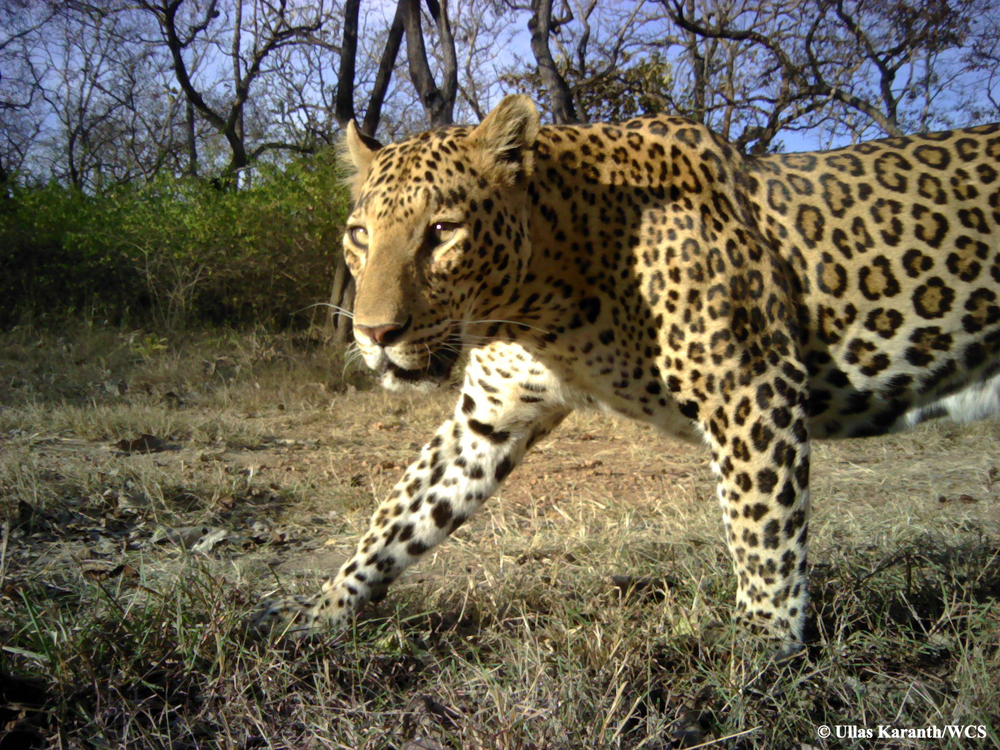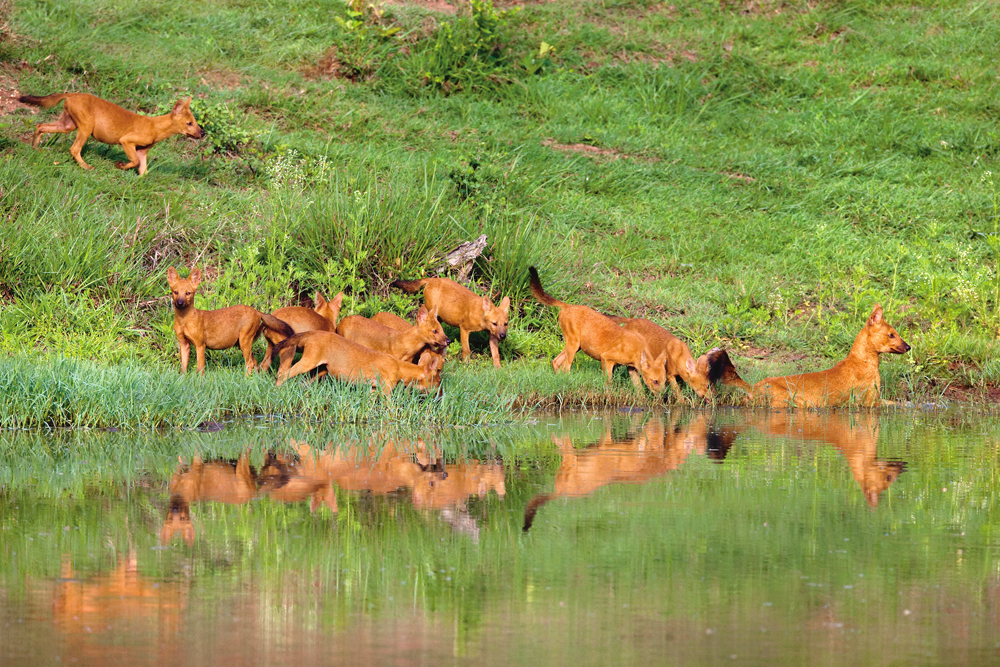Where (Wild) Dogs And (Big) Cats Get Along
New study reveals that in the Western Ghats of India, tigers, leopards, and dholes are “doing a delicate dance” to coexist.
By Vicki Croke

In reserves with plenty of prey, dholes, who are active during the day, find it easier to avoid contact with nocturnal tigers and leopards. Photo: Ullas Karanth/WCS.
It’s not exactly that a massive tiger stalking a sambar deer in the tropical forests of the Western Ghats mountain range of India would turn to a nearby leopard or a pack of Asiatic wild dogs and say, “No, no. After YOU.” But a new study from scientists at the Wildlife Conservation Society does reveal that in four forested reserves in the region, the three species are able to live, as the conservation group characterizes it, “side by side with surprisingly little conflict.”

Tigers are endangered throughout their range. Photo: Ullas Karanth/WCS.
It’s an important trick to pull off as the world’s wild places shrink, and conservationists consider the overlapping needs of different species. The study, published this month in the journal Proceedings of the Royal Society B: Biological Sciences, was conducted using dozens of camera traps, capturing thousands of images. The researchers found that the coveted coexistence is achieved despite the fact that the big cats and the wild dogs, for the most part, hunt the same prey animals, including chital, or spotted deer; big sambar deer; and wild pigs.

Avoiding tigers is something that the smaller predators—leopards, like this one, and dholes— have gotten pretty good at in the wildlife-rich Western Ghats. Photo: Ullas Karanth/WCS.
How do the animals do it? Judicious avoidance is key. And the scientists say the hunters are able to pull that off through some smart adaptations. The four reserves differ from one another in prey density. So the route to (mostly) peaceful coexistence among these carnivores varied a bit from reserve to reserve.
According to a statement from WCS, “The authors found that in reserves with an abundance of prey, dholes, which are active during the day, did not come in much contact with the more nocturnal tigers and leopards. But in Bhadra Reserve where prey was scarcer, their active times overlapped, yet dholes still managed to avoid the big cats. In Nagarahole, a park teeming with all three carnivores and their prey, leopards actively avoid tigers.”

Working together in packs, beautiful rust-colored dholes, or Asiatic wild dogs, are efficient hunters. But the species is endangered. Photo: Dinesh Kumble.
“Tigers, leopards, and dholes are doing a delicate dance in these protected areas,” Ullas Karanth, WCS Director for Science in Asia and lead author of the study, said in a statement, “and all are managing to survive. We were surprised to see how each species has remarkably different adaptations to prey on different prey sizes, use different habitat types and be active at different times. Because of small and isolated nature of these high prey densities in these reserves, such adaptions are helpful for conservationists trying to save all three.”

One Response to “Where (Wild) Dogs And (Big) Cats Get Along”
Can tigers and people coexist peacefully though? https://soundcloud.com/rebecca-nesbit-334333560/conservation-india-tigers
Comments are closed.